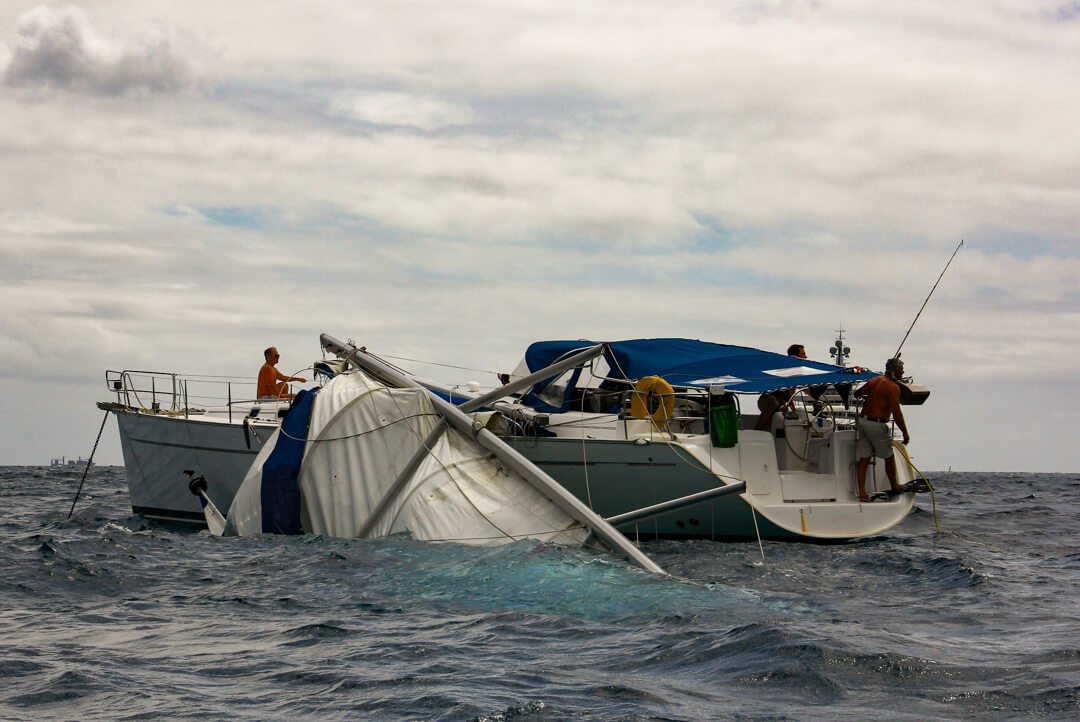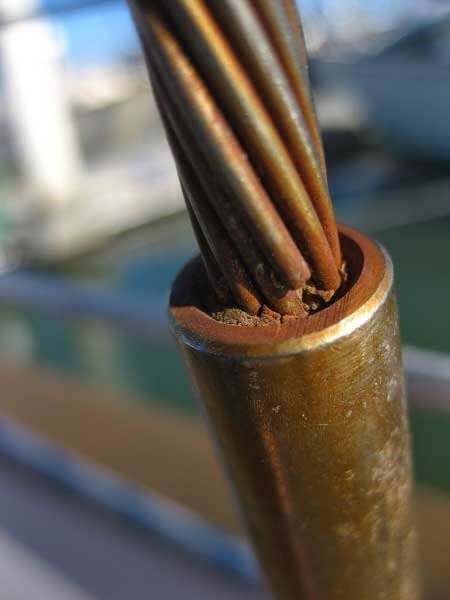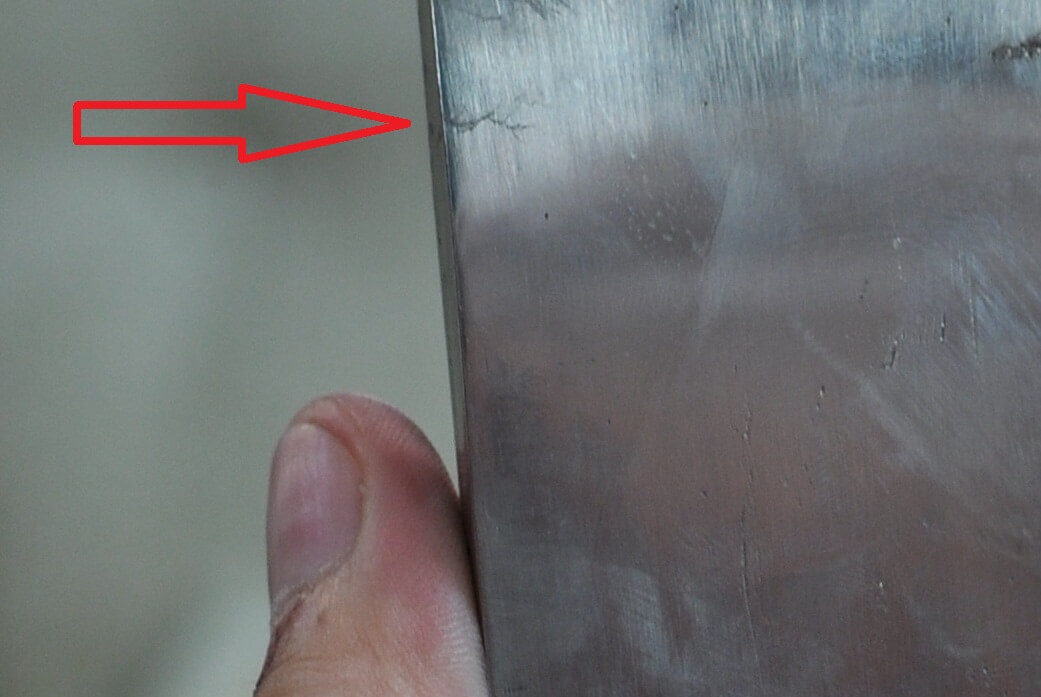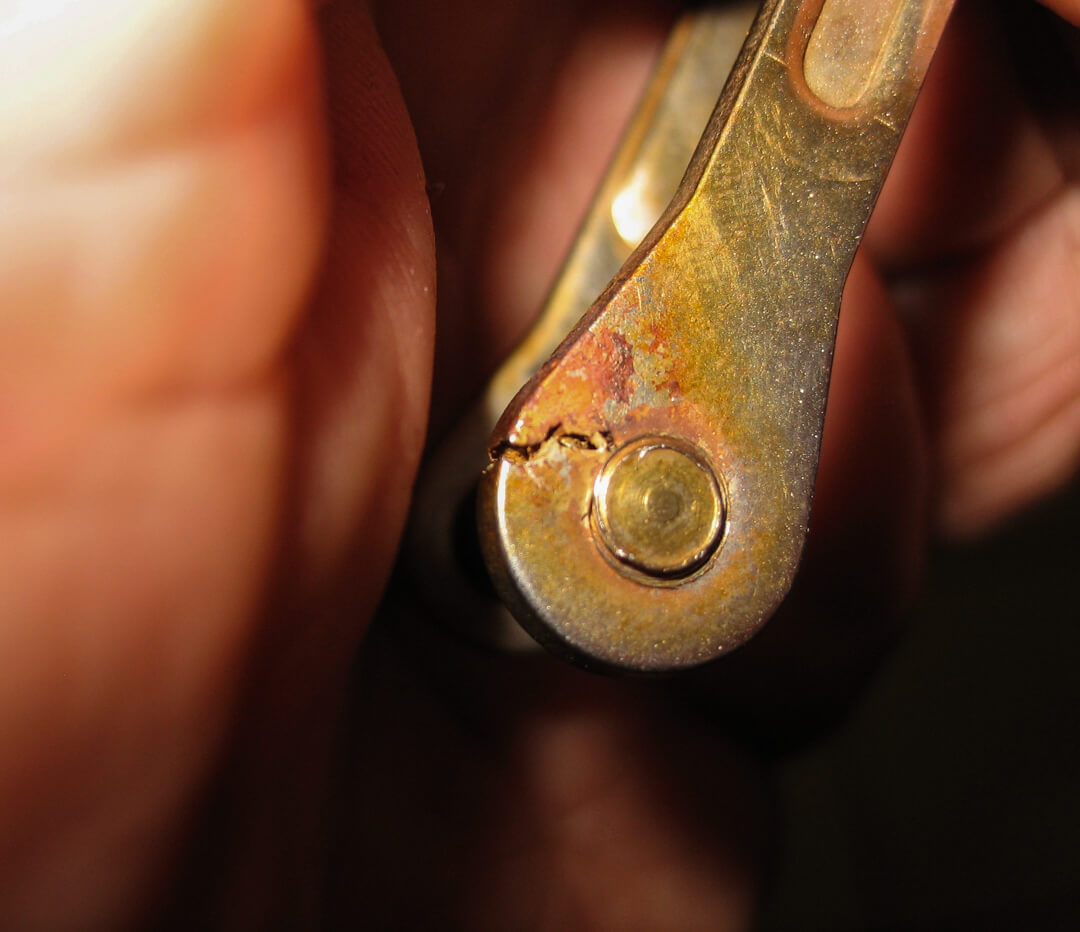It always amazes me while looking around sailboats just how many have telltale rust on their stainless rigging and how, more often than not, it just goes ignored.

While cruising, my wife and I were having sundowners on a neighboring boat when I noticed that he had quite a lot of rust around his rigging terminals and it sparked a discussion. I asked my neighbor how often he checked the rigging and he said he had a fear of heights and so never did. Perhaps it was the conviviality of the evening but for some reason I offered to go up the mast the next day and take a look.
I arrived at the appointed time with my own boson’s chair, and he and my wife hauled me up the mast. I insisted that my wife be involved because she knew what she was doing and how to communicate while I was up top. She also knew how to lower me down without dropping me.
What I found at the mast head put the fear of Neptune into me. The tang holding the backstay had a wide crack running through it, so deep that in places I could get a fingernail in it. Having once seen a mast come down while someone was doing exactly what I was doing now, my gut reaction was to get down immediately but I took a breath and made a note in my little book (no camera phones then). The headstay fitting was discolored but looked okay. I also noted that none of the shackles had been moused.
Next stop, the cap shrouds. Here I found hairline cracks where the wire entered both starboard and port swages.
Further down, I spotted something on the backstay and swung myself across and grabbed hold. Two strands of the stay were broken.
The lower shroud swages looked to be okay. Back on deck I made my report thinking the owner would be happy to have the information, but I was wrong. He was angry, and we got into an argument. He said there was nothing wrong with his boat and obviously I didn’t know what I was doing.
Three days later and I saw the boat alongside the dock where the yard had removed the mast and I couldn’t resist taking a look. I was met by the owner’s wife who apologized profusely and said I probably saved their lives (which I thought a little over the top) as the rigger doing the work said their mast could have come down at any time.

So, what can you do to protect the boat from rigging failure? As stated, rust is a good indicator that something might be amiss. The obvious place to start with a rig inspection is at deck level. Clean any rust stains off the swages and then get in close with a magnifying glass and look for hairline cracks. Pay special attention to where the wire enters the swage. Next, check the chainplates both above and below decks. Where chainplates pass through the deck is notorious for corrosion and because these are usually well bedded to stop leaks, it makes them very difficult to see.

A crevice crack in a through-deck chainplate 
Past its sell by date
The next step is to go up the mast as described earlier. How you go about climbing the mast is down to you. I’m a belt and braces man and insist on using two halyards and a safety line with a strong pelican hook that I can clip on in various places. For maintenance, take a toolkit containing a knife, marline spike, an adjustable wrench, electrical tape, seizing wire, a note pad, and cell phone for taking pictures of any damage (or the spectacular view). Attach a line to your chair that is long enough to reach the deck so you can haul things up or down in a bucket should the need arise. There’s nothing worse than having to go back to the deck because you forgot a tool.
Riggers have differing opinions about the useful life of rigging with some saying seven to ten years and the more optimistic pushing it to fifteen. Most agree that environment can play a part and that rigging used exclusively in tropical climes might need more TLC.
So there you have it—keep your eye on those rust stains; check your rig at least every six months (perhaps more if it’s old) and certainly before a long voyage. If you don’t feel comfortable going up the mast, have someone do it for you and when they give you their report, give them a beer and shake their hand, they might just have saved you a great deal of heartache.
Gary. E Brown©2020
